Hello, this is Mr. Linen.
The summer tweed jacket I ordered from DORSO Tokyo—featuring English Summer Tweed by Marling & Evans—is finally complete.
I shared my thoughts on the fabric in a previous post, but now that the finished jacket is in my hands, I’d like to give you a closer look at how it turned out.
From the silhouette to the fit, and all the thoughtful tailoring details, this jacket is everything I hoped for—and more.
Let me walk you through the final result of this made-to-measure experience.
The Fabric I Chose
The fabric is a 50% wool and 50% linen blend from MARLING & EVANS, called English Summer Tweed.
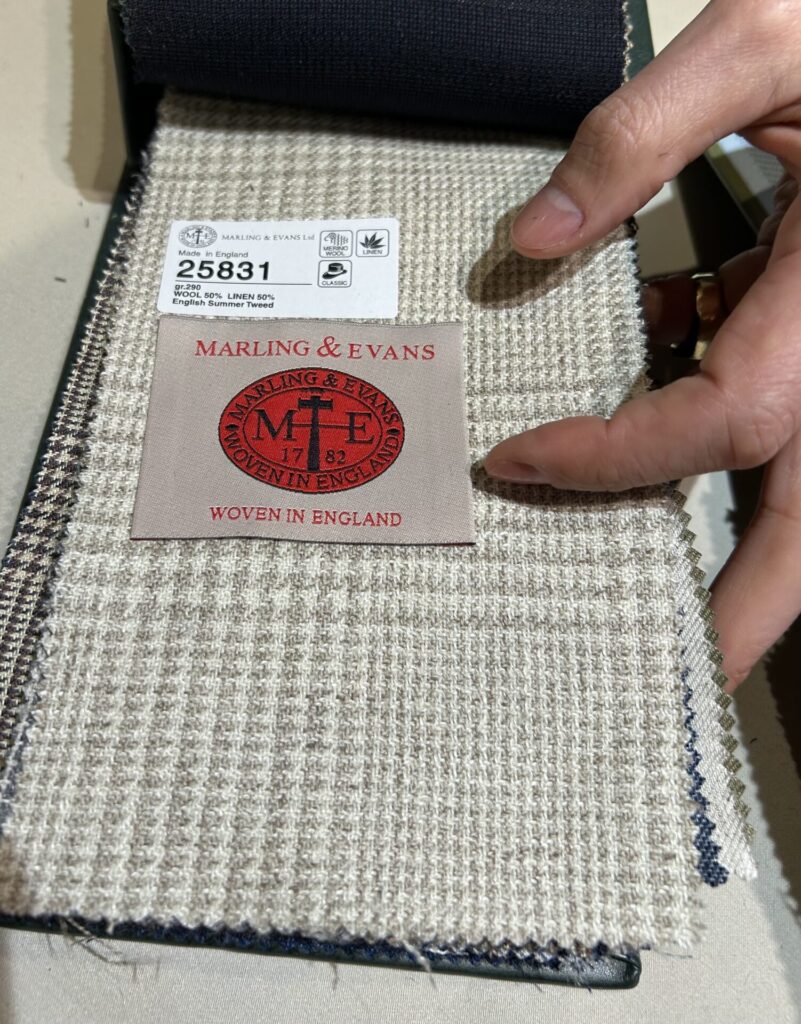
When you think of tweed, autumn and winter usually come to mind. But this one, with linen mixed in, is meant for spring and summer.
It weighs in at 290g per meter.
I’m particularly fond of both linen and tweed, and this fabric lets me enjoy the best of both worlds—it’s an ideal choice for me.
Mr. Saito, the owner of DORSO, recommended it to me, and I followed his advice.
It was hard to get a real sense of the fabric just from the small swatch in the bunch book, but once it became a jacket, I could feel both the crisp texture of linen and the refined touch of wool.
The surface has a slight fuzziness, making it warmer than a typical wool-linen blend.
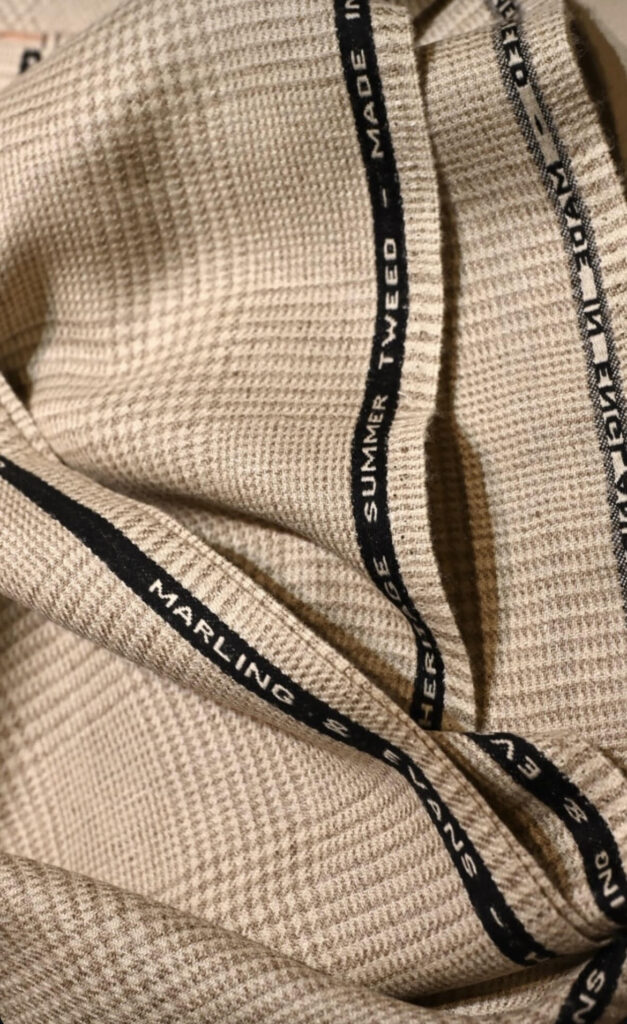
Even though it’s called summer tweed, I wouldn’t wear it in the peak of a Japanese summer—but I believe it’s perfect for spring and autumn, and even suitable for winter.
White fabrics tend to look great in winter, though the brightness might be a little too much for fall.
When Mr. Saito—a true fabric aficionado—recommends something, I know I can trust him. And I’m glad I did.
The Perfect Fit
When I placed my first order at DORSO, we did a basted fitting. This time, based on Mr. Saito’s judgment, we skipped the fitting and went straight to the final piece.
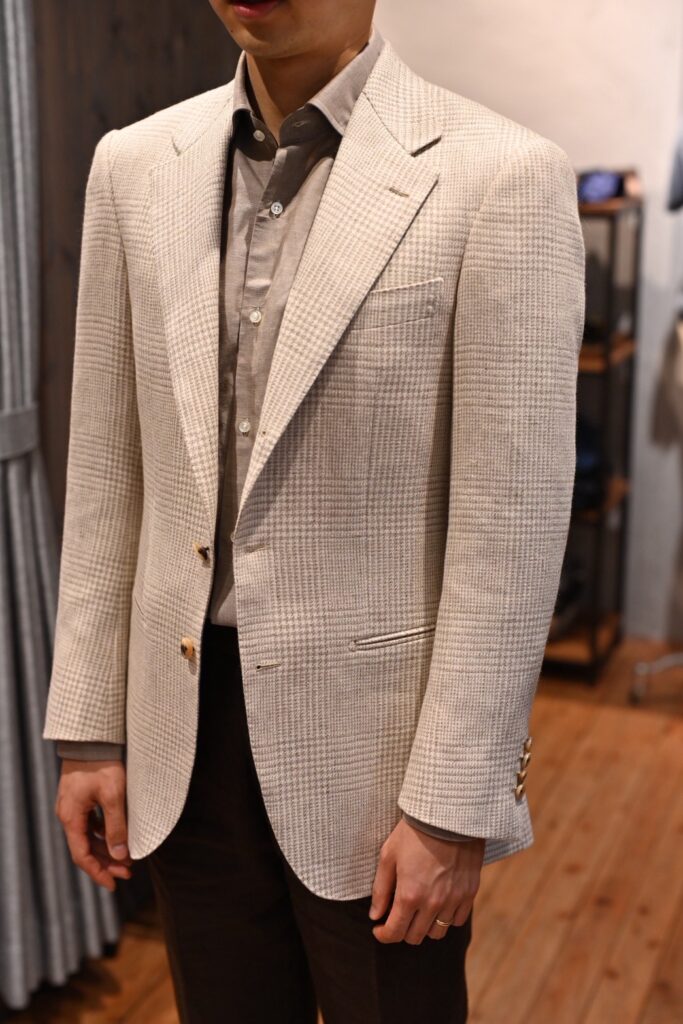
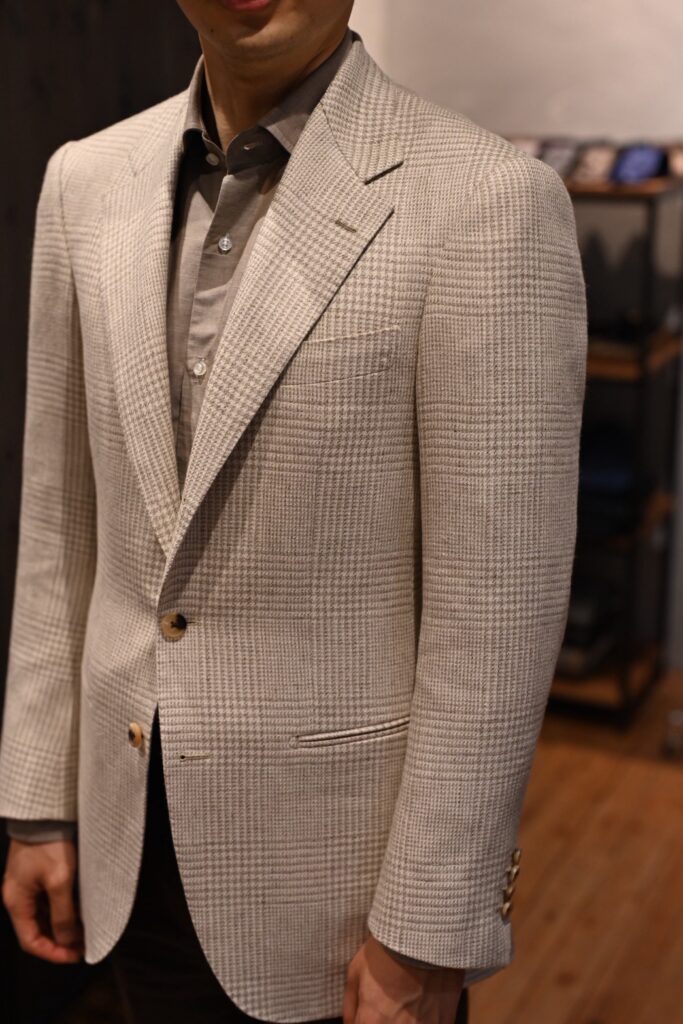
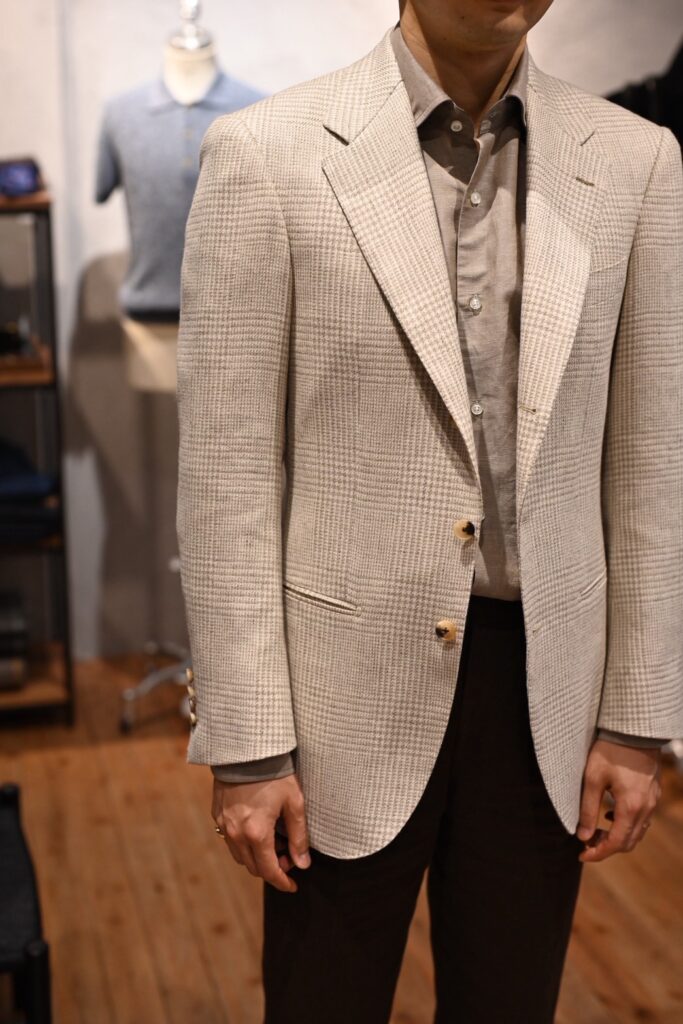
Just look at the silhouette—this is where DORSO truly shines.
I honestly don’t know how they achieve such beauty, but the three-dimensional form is just remarkable.
You can feel the gentle curves around the shoulders, arms, chest, and waist.
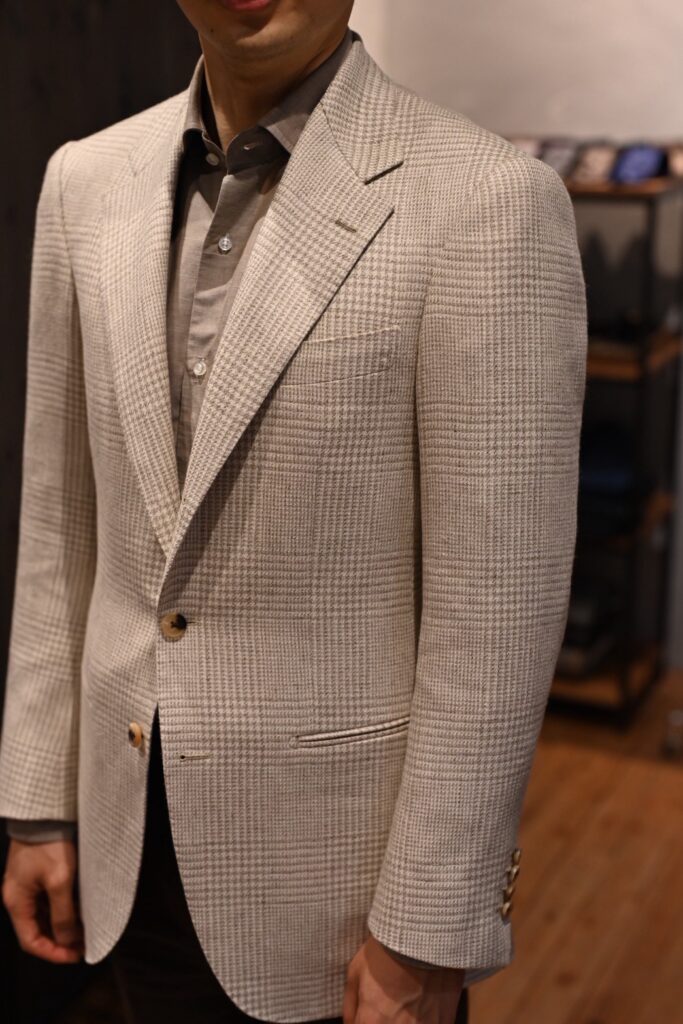
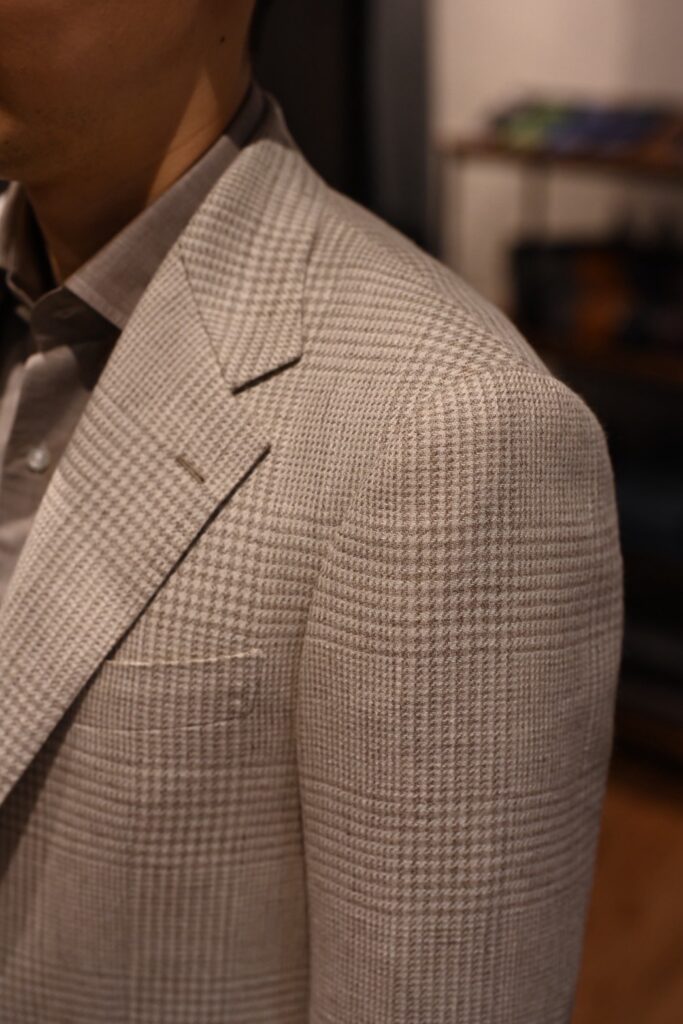
The back is especially impressive.
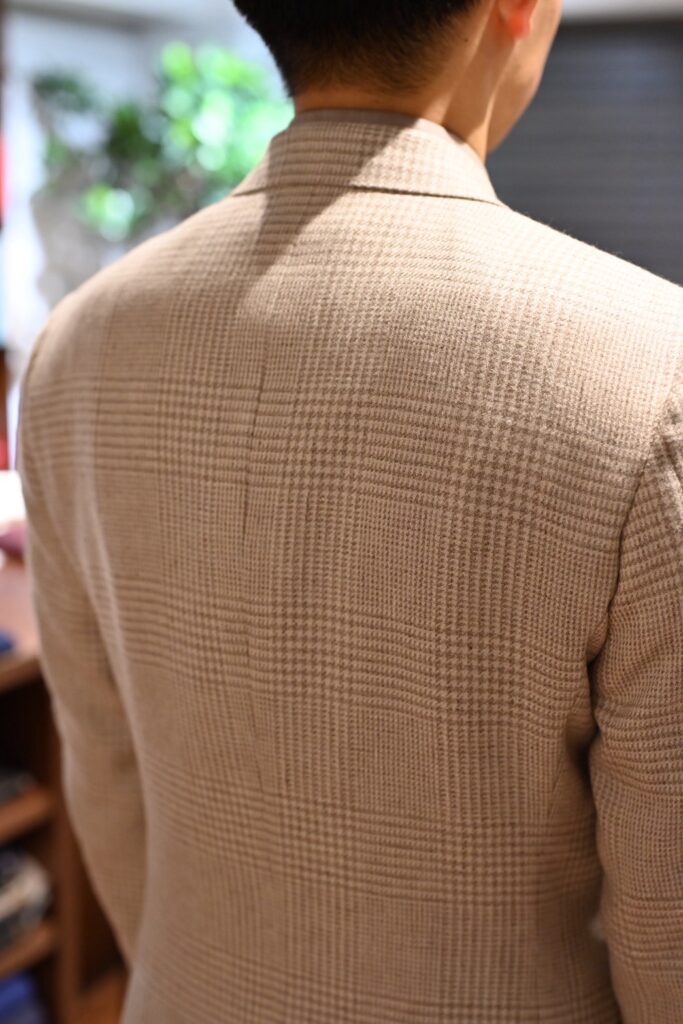
I have square shoulders that tend to create tension lines, but there are absolutely no unwanted wrinkles.
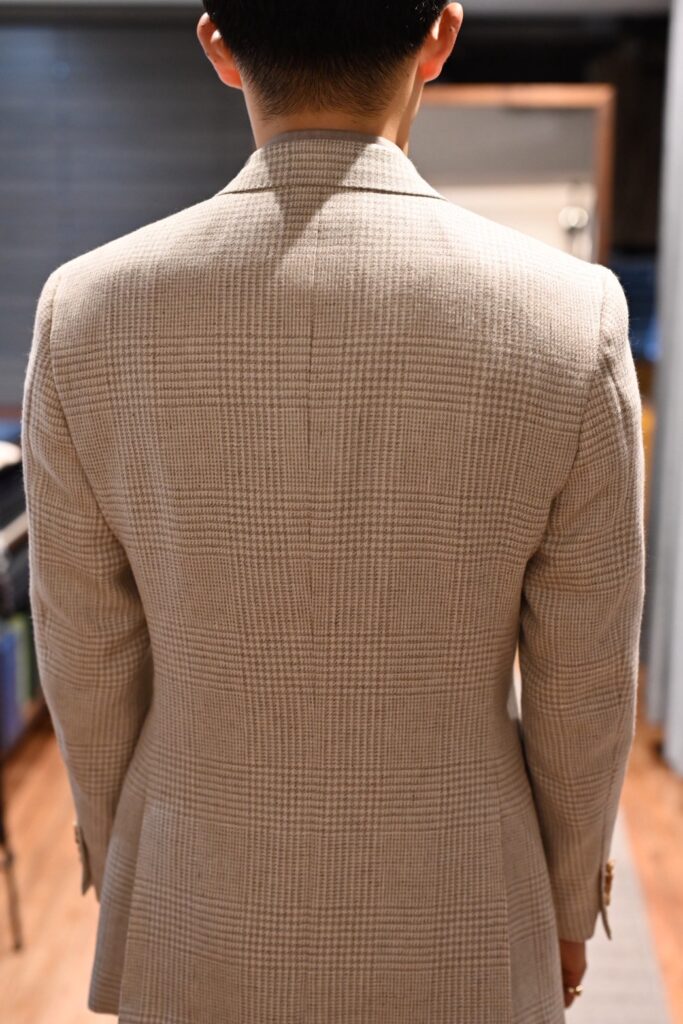
The silhouette is a flawless hourglass shape.
Needless to say, the comfort is perfect as well.
Details
I kept the details almost identical to the suit I had made previously:
Three-roll-two front
Four-button sleeves
Side vents
9.5 cm lapel width
Welted pockets without flaps
No darts beneath the hip pockets
Fully lined
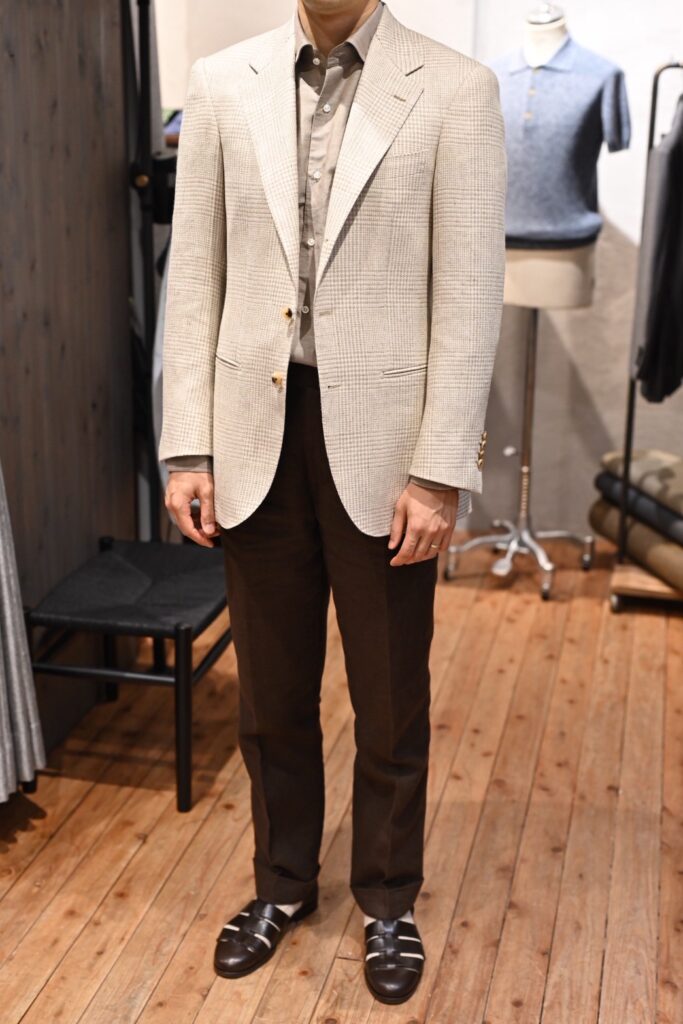
The only change I made was in the length—I shortened it by 5 mm compared to my suit jacket.
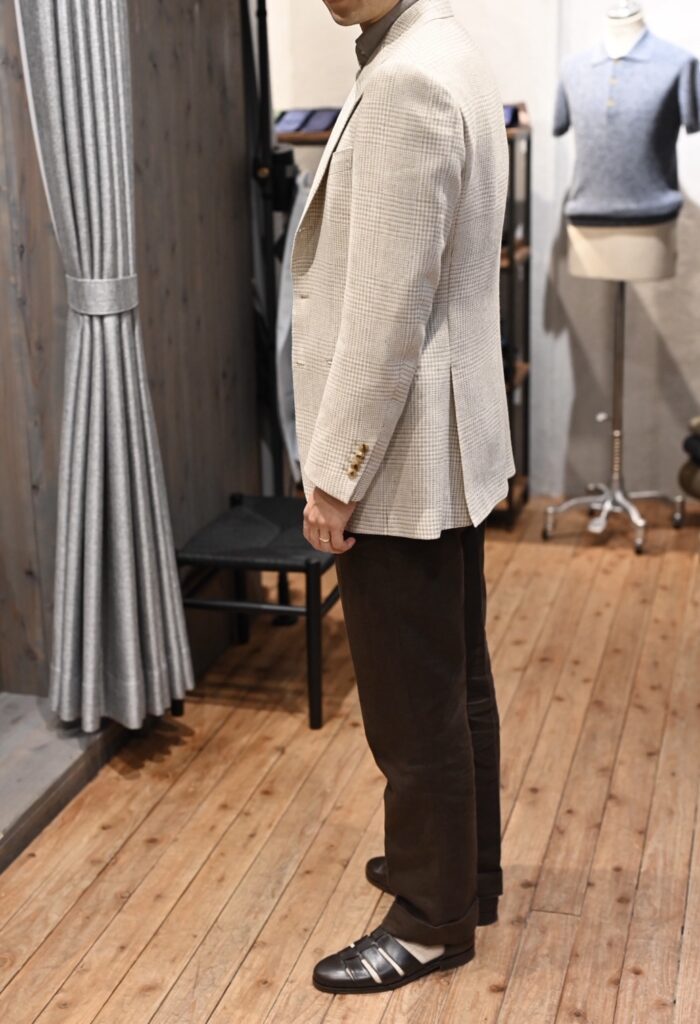
Mr. Saito told me I could shorten it by up to 1 cm, but since I prefer slightly longer jackets, I opted for just 5 mm.
As for optional tailoring features, I selected the same three options as last time from the following five:
-Increased ease in the shoulder
-Increased ease in the sleeve
-Hand-attached collar construction
-Curved gorge line shaping
-Hand-sewn flower loop (boutonnière)
The extra ease in the shoulders and sleeves is for better comfort.
Honestly, I might not be able to tell the difference, but if I went without the extra ease and then regretted it afterward, I’d be kicking myself—so I’ll probably stick with it forever.
I asked for the buttonhole to be hand-sewn, but not in the Milanese style—just regular hand stitching.
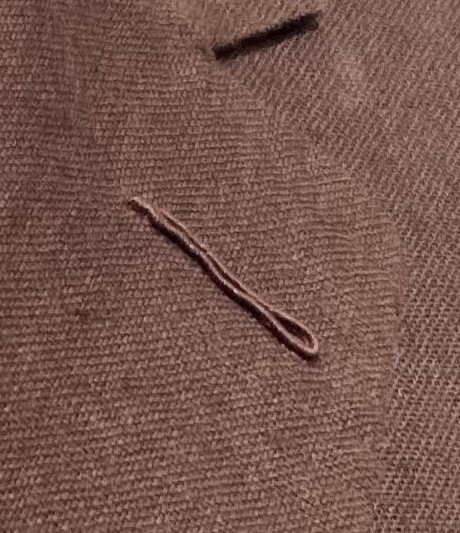
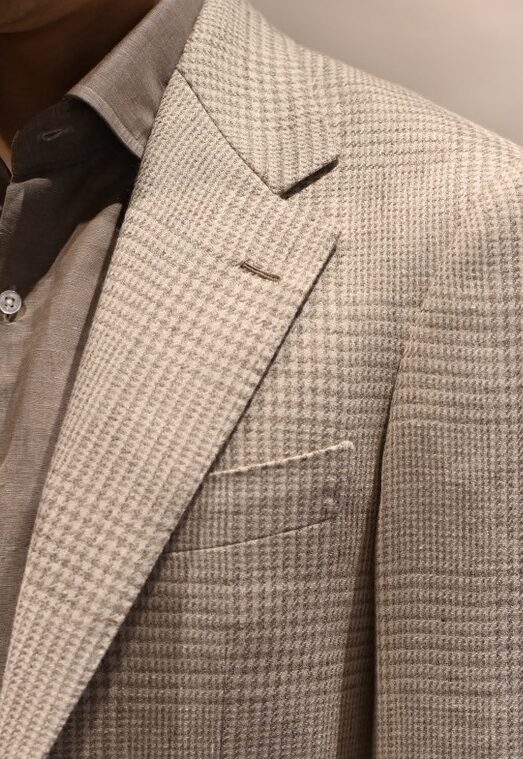
I don’t want it to stand out too much, but I do want the bragging rights of saying it’s hand-sewn.
Since this jacket is for casual use, I briefly considered adding a curved gorge line for a bit of flair, but decided against it.
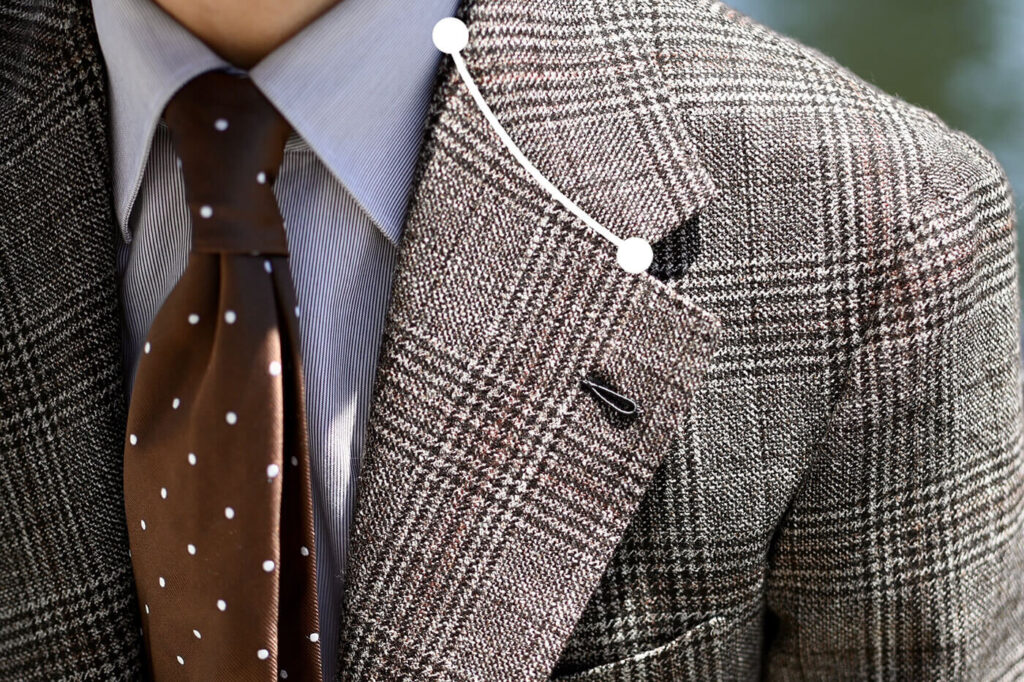
For the same reason as the buttonhole—I felt that having a very “handmade” look might make me a bit self-conscious.
I prefer a borderless look—designs that are simple, understated, and won’t look out of place anywhere in the world.
That said, since I’ve never tried the curved gorge line, I might be prejudging it unfairly. Maybe I should give it a go sometime—perhaps with a gentle curve that doesn’t draw too much attention.
Is Full Lining the Right Choice for Summer Tweed?
Although this is technically a spring/summer fabric, I opted for full lining.
On the day I picked it up, it was 29°C outside. When I tried on the jacket, I immediately felt hot and briefly wondered if I should’ve gone with half lining.
But the reason I chose full lining is that I also want to wear it in autumn and winter.
Technically, lining doesn’t provide insulation—but it does block a bit of airflow, and visually, a fully lined jacket looks a bit more substantial, which helps it appear seasonally appropriate in colder months.
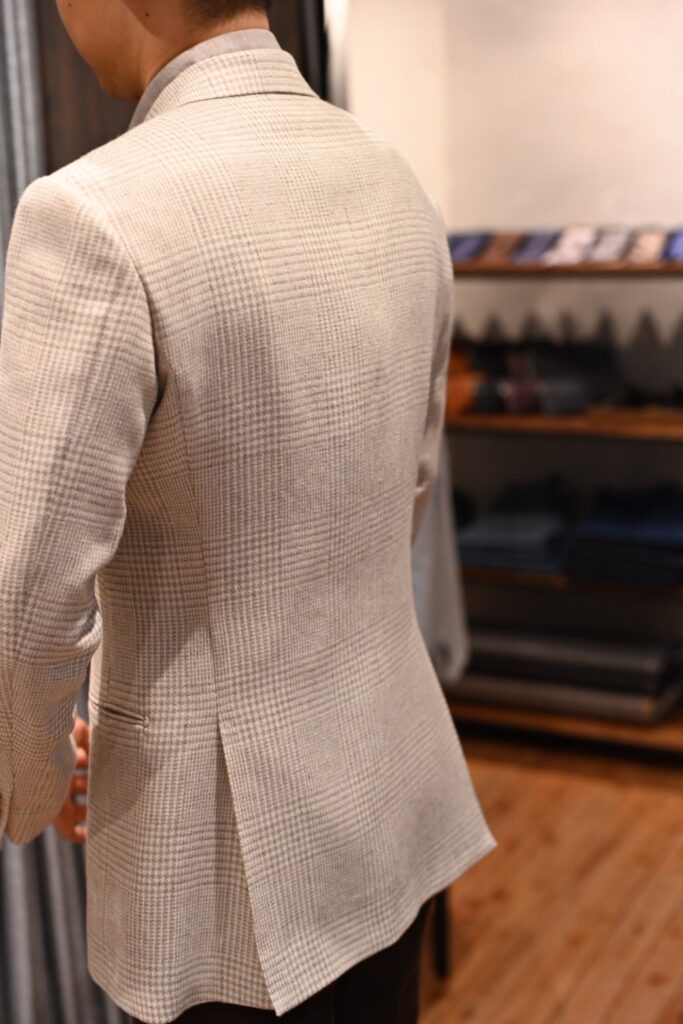
Still, this is a summer tweed. If I truly wanted a jacket for winter, I should’ve chosen a regular tweed.
It’s a jacket that can be worn in winter—but if it ends up being uncomfortable during its primary season (spring/summer), that defeats the purpose.
At this point (in May), I do wonder if I made the right call—but I might feel grateful for the full lining come winter.
I’ll wear it throughout the year and see how I feel.
That’s it for now.
Thanks for reading.
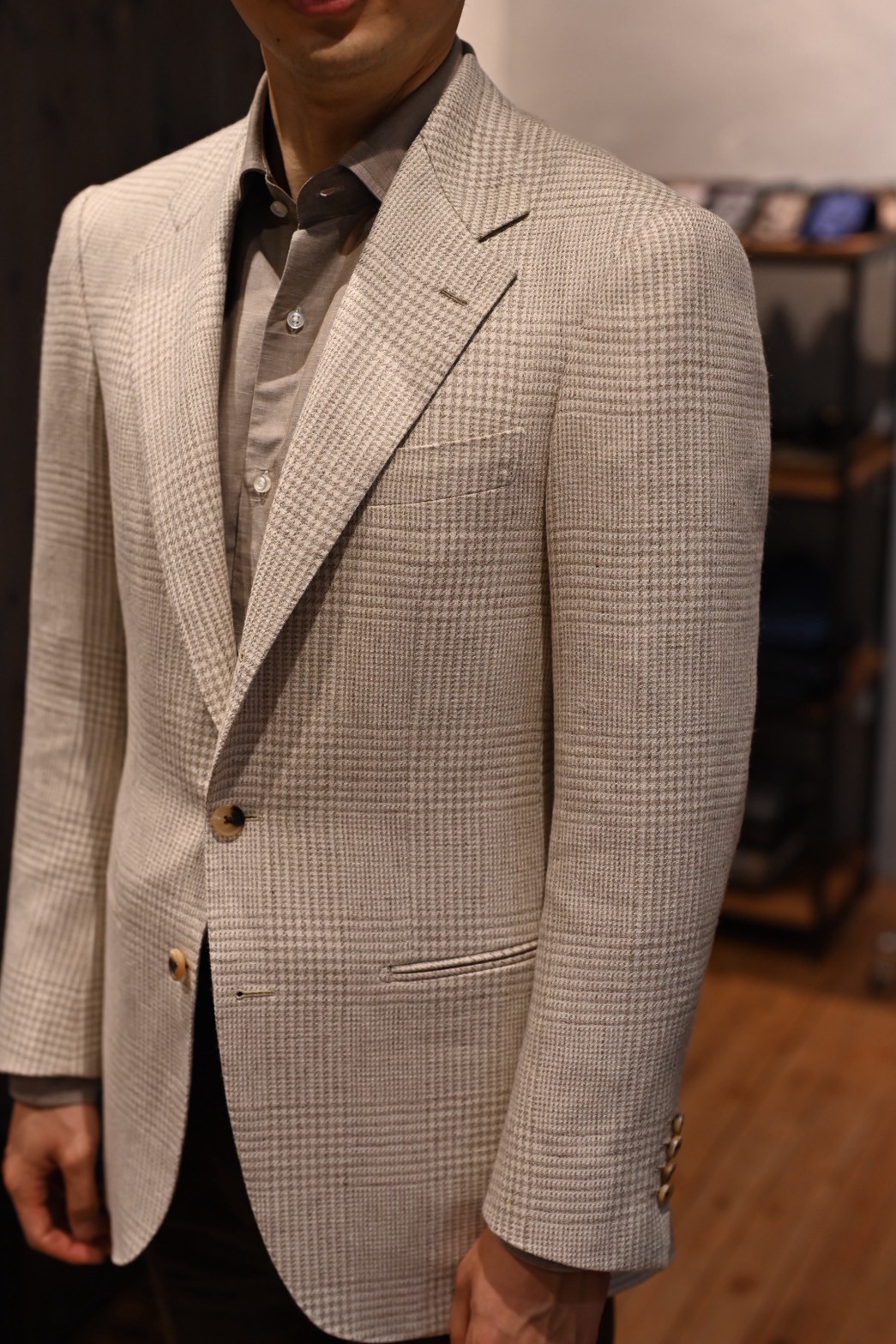







コメント